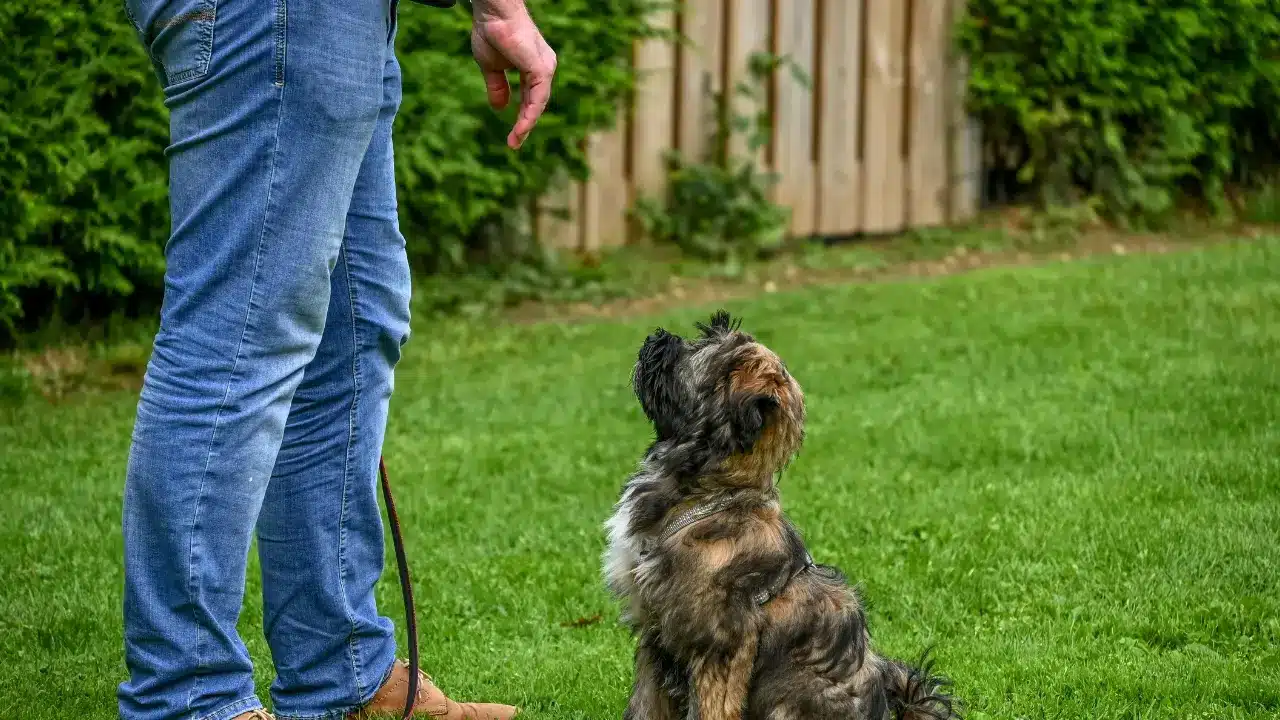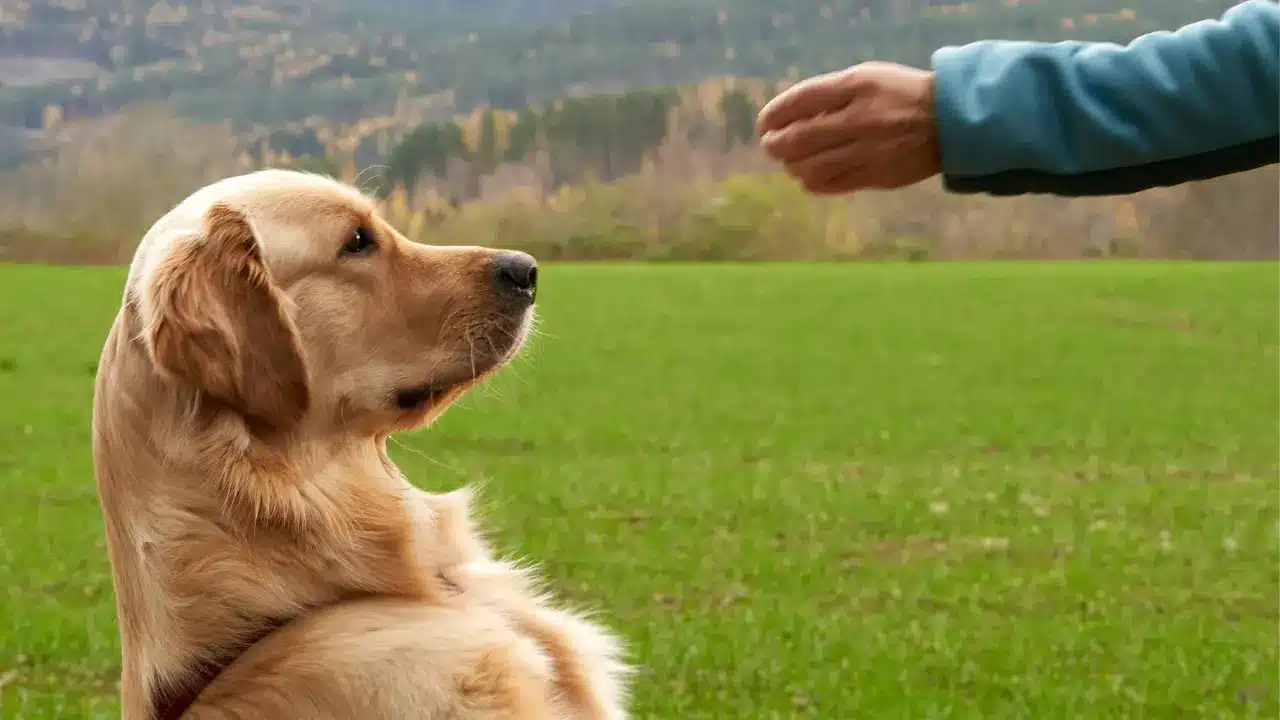Blog Expert Tips for Solving Common Dog Training Challenges
Starting a dog training journey means working toward a better life with your pet. It will have ups and downs, but each challenge helps you understand your dog better. Proper practices, consistent training, and patience can solve dog training problems, such as dealing with a leash-pulling dog or a hard-to-housebreak puppy.
The key takeaways from this article are:
- Embracing the challenges with perseverance and patience when addressing common training issues
- Understanding your dog’s personality influences the training process
- Managing barking, leash manners, and housebreaking are solvable with the best techniques
- Positive reinforcement is your friend in encouraging good behavior
- Consistency is critical in the transformation of challenge to triumph
- The cornerstone of successful training is communication between you and your pet
Understanding a Dog’s Learning Style and Personality

Every dog learns differently. Knowing the dog’s personality and learning style is critical to adapting training methods to the dog’s needs. You also need the right strategy for addressing obedience issues or behavioral problems.
Notice how the dog reacts to different situations and commands. While some respond to physical or visual cues, others respond well to verbal commands. This observation is the first step in solving training problems and individualizing them.
Introduction to Dog Behavior

Body language and behavior are crucial to learning to build a close bond with a furry friend. Dogs communicate primarily through body language, which can be divided into three categories: aggression, alertness, and relaxation.
A direct stare may be threatening. Avoid maintaining a stare and not encroaching on a dog’s personal space. Dogs convey emotions with their ears. Forward-pointing ears indicate alertness. Sideways-pointing ears indicate anxiety or fear. A tucked tail may be a sign of submission or fear.
Relaxation is characterized by an open, loose posture and a wagging tail. A dog in this state often blinks slowly and lowers its ears.
Understanding Canine Emotions
Dogs display emotions and can read your emotions. Addressing a dog’s needs is crucial to understanding their emotions better. Being aware of your feelings when interacting with a dog is essential. Some dog facial expressions are misleading, but some indicate their emotional state.
A relaxed dog has a wagging tail, a loose posture, and soft eyes. Stressed dogs avoid eye contact, have a stiff posture, and display hard eyes. Key indicators of emotions are:
- Avoiding eye contact – a sign of stress or discomfort
- Hard eyes – a negative state of mind
- Pointed ears – a sign of stress or alertness
- Soft eyes – a sign of happiness or calm
- Whale eyes – a sign of stress or anxiety
Understanding Common Dog Issues

Dog behavioral issues are often mishandled or misunderstood by dog owners. Thoroughly understanding common dog behavior problems is the first step to preventing and solving them. Solid obedience training helps control or avoid many behavioral issues. Among the most common are:
- Aggression
- Barking
- Destructive chewing
- Resource guarding
- Howling
- Mounting and masturbation
- Play biting, nipping, and mouthing in adult dogs
- Biting, nipping, and mouthing in puppies
- Separation anxiety
- Whining
- Jumping
Aggression is among the most common and serious behavioral problems. It is the main reason pet owners seek help from veterinarians, trainers, and behavioralists. Each type of barking has a distinct function. If a dog is repeatedly rewarded for barking, it learns to use barking to its benefit.
Chewing relieves pain caused by incoming teeth in young dogs. Senior dogs chew to clean their teeth and keep their jaws strong. Chewing also relieves low-grade frustration or stress and prevents boredom.
Resource guarding ranges from outright aggression to quite innocent behavior. Some dogs guard against specific individuals, such as strangers, while others guard against everyone.
Howling is also a form of vocal communication. Dogs howl to communicate, relate to other animals, and get noticed. Some dogs respond to a high-pitched sound.
Although masturbation, humping, and mounting are natural dog behavioral issues. There are techniques to curb the behavior.
An adult dog’s jaws cause significantly more pain than a puppy’s. Adult dogs who mouth others were not suppressed as puppies. Human parents did not teach them to chew on toys or be gentle.
Young dogs use their mouths to explore the world. It is essential to train them to avoid mouthing behavioral issues.
Many dogs become disruptive or destructive when left alone. The goal is to resolve underlying anxiety by teaching them to enjoy or tolerate being left alone.
Dogs commonly whine when they try to appease you, are anxious or excited, or seek attention. Separation anxiety, injury, or a medical condition can also cause whining.
Jumping is a common issue, especially when dogs greet people. Training your dog to stop jumping involves reinforcing calm behavior and using consistent training methods to discourage excessive jumping.
Addressing Behavioral Issues
Nothing is as heartbreaking for dog owners as seeing their loved ones wrestle with behavioral issues. Strategies for addressing these issues are crucial, as they provide tailored solutions and expert guidance for practical dog training. Whether fear-based aggression, house-soiling, or excessive barking, the problems are subtle and infuriating.
With the right attitude and knowledge of dog behavior, dogs can overcome these problems and lead healthier, happier lives.
Studying Canine Behavior
Dogs are pack animals that survive on communication and interaction with family members. Teaching basic obedience commands such as ‘sit,’ ‘stay,’ and ‘come’ is crucial for effective communication between dog and owner. Positive reinforcement training works well in shaping a dog’s behavior. It rewards good behavior and punishes evil.
The Significance of Socialization
Effective socialization avoids behavioral problems such as phobias, anxiety, fear, and aggression. Proper socialization helps raise a well-behaved dog that integrates well into home life and society. It is essential to socialize from an early age. Dogs are most receptive to new experiences between eight and eleven months old.
Common Behavior Problems
Identifying behavior problems is challenging, especially for new dog owners. One of the essential things to consider is understanding the root cause of the behavior. Some common behavior problems are:
- Whining and excessive barking
- Digging and destructive chewing
- Anxiety or fear-based aggression
- Marking territory and housebreaking accidents
When you identify a behavioral issue, it is time to develop a plan. Some general steps to follow include:
- Consulting a professional
- Setting clear rules and boundaries
- Using positive reinforcement training
The First Step to Successful Training

Successful training starts by establishing a bond with the dog. This bond is built through consistent work and effort, which brings cooperation and trust, and improves the potency of training. Trust and respect come about through quality time spent with your pet.
Positive reinforcement, like praise and rewards, reinforces the desired behavior. Rewards may be anything a dog is drawn to, including playing with toys, pets, or treats.
Set clear expectations by defining the specific behavior and commands you want to teach your dog. Be consistent in expectations and commands to avoid confusion.
Create a distraction-free, quiet space for training sessions. Keep training sessions to five to ten minutes to maintain the dog’s attention. Short training sessions ensure the dog will not feel bored, disinterested, irritated, or overwhelmed. Move through several sessions each day.
Be observant and patient. Every dog learns at its own pace. Observe the dog’s reactions and adjust the approach as needed.
Consider consulting a professional trainer or enrolling in a training class for additional support. Make training your dog fun. If you both enjoy yourselves, the sessions will be more effective.
Leash Training and Walking
People think dogs innately know how to walk on a leash. However, dogs might react differently to leash training based on their personalities and past experiences. It is a skill that needs to be taught. The skill is essential to teach your dog. Here are some tips:
- Introduce a puppy to a leash and harness, or collar
- Teach a cue
- Make the dog come to you
- Practice indoors
- Take it outdoors
Let the dog get used to wearing a leash, harness, or collar. Let the canine wear it briefly while you play with the dog and give the pet treats.
Introduce a sound cue that equates with ‘Food is coming.’ Make the sound. When the dog looks at you, reward it with a treat. After a few times, the dog automatically comes for the treat.
Back up a few steps. Then, reward your pet when they get to you. Continue the progression until the dog approaches you and walks a few paces.
Practice walking in a room with few distractions. The dog finds it challenging to see and feel the leash. Offer praise and treats as the dog learns to walk with a leash.
When you go outdoors, there will be new and intriguing sights, smells, and sounds. Keep the first walks short and exercise patience.
Managing Separation Anxiety

Dealing with separation anxiety is heartbreaking and challenging. Understanding what the symptoms of separation anxiety are and how to handle the problem is essential to your peace of mind and your pet’s health.
Separation anxiety is a psychological disorder that happens when dogs are too attached to their owners and become upset by being left behind. It manifests in various behavior problems, like attempts to escape, pacing, destructive chewing, and excessive barking. Although not all dogs experience separation anxiety, it is a significant source of stress for owners and dogs who do.
Trends in dealing with separation anxiety include:
- Virtual pet therapy sessions
- CBD products
- Interactive puzzles and toys
- Pet-sitting or doggie daycare like Very Important Paws
- Calming sounds and music
- Pet owner support groups.
Telehealth service sessions involve behavior modification techniques and provide support for owners and their dogs.
CBD products have potential calming effects. They are available in supplements, oils, and treats to alleviate separation anxiety symptoms.
Interactive puzzles and toys help dogs be engaged and mentally stimulated. They also reduce anxiety and alleviate boredom.
Dog daycare services, such as Very Important Paws, provide alternative solutions to help dogs cope with separation anxiety. These services provide companionship and socialization when owners are away.
White noise or calming music can help establish a calm environment. Professional training programs for separation anxiety also address confidence-building and teaching your dog coping mechanisms for being alone.
Online forums and support groups are helpful resources. They provide a platform for finding emotional support, guidance, and experience sharing with others in the same position.
Effective Communication
Effective communication is critical when addressing the challenges of dog training. Consistent, clear messages help build understanding and trust between your dog and you. Choose simple, one-word commands, such as ‘stay’ and ‘sit.’ Use consistent volume and tone for commands.
Immediately reward desired behaviors with praise or treats. Be specific about the behavior you are rewarding. Maintain a calm and open posture. Reinforce verbal commands with hand signals. Pay attention to the dog’s body language and responses.
Adjust your approach based on the dog’s reactions. Training takes time. Avoid frustration. If you or your dog becomes overwhelmed, take a break. For persistent issues, consider consulting an experienced trainer. Very Important Paws has a professional trainer on staff. Contact us today!

